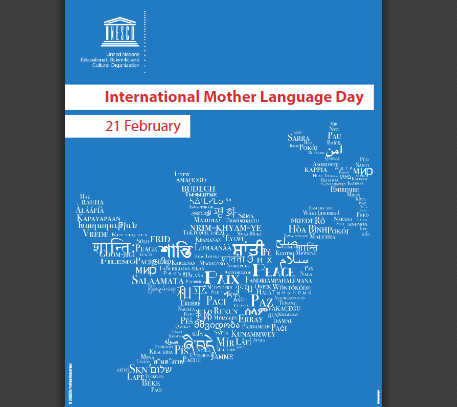International Mother Language Day (IMLD)

International Mother Language Day has been observed every year on 21 February, since 2000 with the aim to promote linguistic and cultural diversity and multilingualism.
The theme of International Mother Language Day 2025 is “Languages Matter – Silver Jubilee Celebration of International Mother Language Day ”.
History
The main idea of International Mother Language Day was brought by Bangladesh. It is a national holiday in Bangladesh. It’s on 21st February when Bangladesh is fought for recognition for the Bangla language.
On February 21, 1952, students and social workers of Dhaka University protested against the linguistic policy of the then Pakistan government, protesting to maintain the existence of their mother tongue.
Pakistan police opened fire on protesters resulting in many youths being martyred. The sacrifice of the martyrs was not wasted and the government has to give the Bengali language the official status, so in memory of the martyred youth in the linguistic movement, UNESCO announced its first celebration on February 21, 1999, as Mother Language Day.
According to the United Nations, the number of languages spoken in the world is approximately 6900. Among them the topmost spoken languages are Japanese, English, Russian, Bengali, Portuguese, Arabic, Punjabi, Mandarin, Hindi, and Spanish.
India has been a country of diverse culture and language, there is about 43-million-Hindi-speaking population. After Hindi and Punjabi, Bengali is the third most spoken language in India. Hindi is also popular among other mother tongues as a second language.
On this day, colorful events and competitions are organized in most of the schools and colleges. There are events like speech, debate, singing, essay, writing competition, painting competition, music, and theatrical exhibition.
On International Mother Language Day UNESCO and other UN agencies take part in the events to promote cultural and linguistic diversity all around the world. They appreciate and encourage people to be knowledgeable about their mother language and provide them with awareness regarding the promotion of their language and culture towards other countries.
According to UNESCO
Technology has the potential to address some of the greatest challenges in education today. It can accelerate efforts towards ensuring equitable and inclusive lifelong learning opportunities for all if it is guided by the core principles of inclusion and equity. Multilingual education based on mother tongue is a key component of inclusion in education. During COVID-19 school closures, many countries around the world employed technology based solutions to maintain continuity of learning. A recent UNESCO, UNICEF, World Bank and OECD survey on national education responses to COVID-19 school closures of 143 countries showed that 96 per cent of high-income countries provided remote learning through online platforms for at least one education level compared to only 58 per cent of low-income countries. In low-income contexts, the majority of countries reported using broadcast media such as television (83%) and radio (85%) to support continuity of learning. Obviously, teachers lacked skills and readiness for using distance teaching. Many learners lacked the necessary equipment, internet access, accessible materials, adapted content, and human support that would have allowed them to follow distance learning. Moreover, distance teaching and learning tools, programmes and content are not always able to reflect language diversity. Suggested Read: Sanskrit – Mother of all Languages